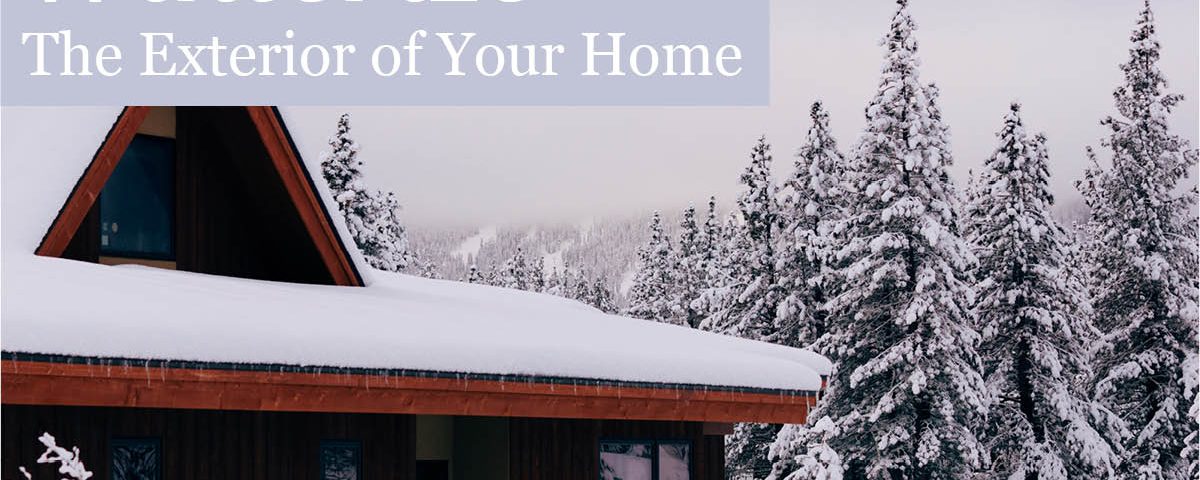Winterize The Exterior Of Your Home

How Roofing Can Increase Energy Efficiency
August 24, 2021
Signs You Need A New Roof
December 1, 2021Winterize The Exterior Of Your Home
As winter approaches, it’s essential to prepare your home for the change in seasons. You can take several steps to ensure that your home stays warm and secure this winter and save yourself costly repairs or high energy bills later down the line.
Check The Foundation
As your house settles over time, you may begin to see small cracks appearing in the foundation. While these hairline cracks may seem inconsequential, they can grow and begin to cause more problems later on. They also allow insects looking for a warm place to nest in small cracks like these during the winter. If you have a brick or stone home, check the mortar for cracks as well. Seal anything you find with mortar or expanding foam to help keep heat in and the critters out.
Shut Off Exterior Water
Burst pipes and exterior faucets can cause severe damage to your home and plumbing. Pipes can burst when the water trapped in your outdoor pipes and faucets freezes and expands. The surefire way to prevent this from happening is by shutting off your outdoor water supply. Locate it, and carefully shut it off without affecting your indoor water supply. Then be sure to drain any water left sitting in the pipes. Another option is to use insulating wrap and covers on outdoor plumbing. If you’re not comfortable doing this yourself, connect with a trained professional for help.
Check the Roof
Heat rises, making your roof one of the top places for it to escape your home. Check your roof for loose or missing shingles or other damages to ensure that heat isn’t leaving your house through the roof and driving up your energy bills. A poorly maintained roof is another entryway for critters seeking shelter.
Shelter Plants
Some plants will die off in the winter and sprout back up in the spring, but others like the grass in your front lawn or back yard will need to survive during the winter. You can help your plants get through the cold by covering them with blankets or plastic sheeting in severe weather or extreme cold. Winterize your lawn so it’s not affected when the season changes and the weather starts to get warmer.
Inspect the Chimney
Just like the foundation and siding of your home, it’s important to inspect your chimney for cracks and fill in any that you find. Also, examine the flashing, the metal piece at the seam of your chimney and roof. Be sure that the chimney cap is securely fastened, as well. If you plan on using your indoor fireplace a lot this winter, it can never hurt to have it professionally inspected.
Close Vents
Check any exterior vents to ensure that they’re in good condition and closed up for the winter. If your ducts are damaged, have them repaired to seal out the cold. This will help keep your home warm and your energy bills low.
Check Doors and Windows
Doors and windows are the most common places for air leaks to occur. Inspect the seals around your windows and doors and seal any gaps with caulk or the appropriate weather stripping. This will ensure that water doesn’t enter your home and cause damage in the event of heavy rains or melting snow.
It’s easy to winterize your home, and following these simple steps can save you lots of headaches and thousands of dollars in repairs later on. Taking preventative measures and caring for your home is a sure way to make it last for many years to come.




